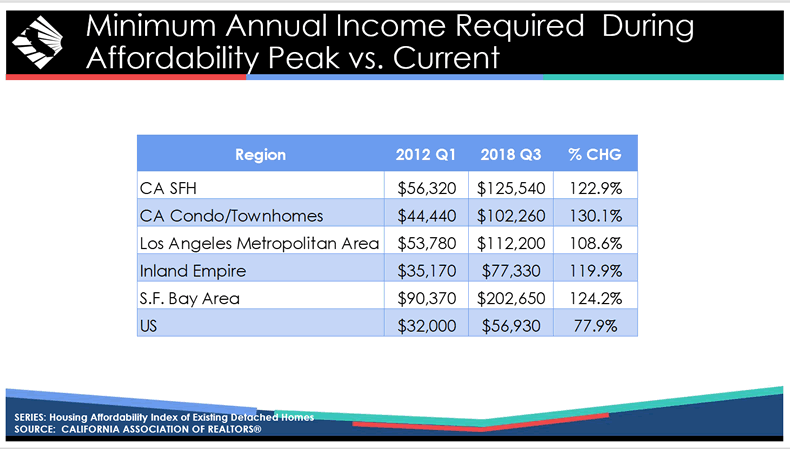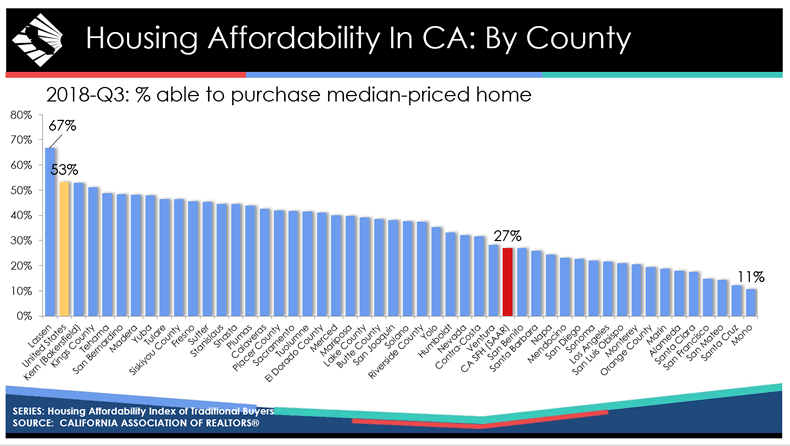
|
California Housing Affordability Down 1% from a Year Ago Twenty-seven percent of California households could afford to purchase the $588,530 median-priced home in the third quarter of 2018, up from 26 percent in second-quarter 2018 and down from 28 percent a year ago.
LOS ANGELES (Nov. 1) – More Californians could afford to purchase a home in the third quarter as flat home prices and stable interest rates combined to improve California housing affordability, the CALIFORNIA ASSOCIATION OF REALTORS® (C.A.R.) said today. The percentage of home buyers who could afford to purchase a median-priced, existing single-family home in California in third-quarter 2018 edged up to 27 percent from 26 percent in the second quarter of 2018 and was down from 28 percent in the third quarter a year ago, according to C.A.R.’s Traditional Housing Affordability Index (HAI). The index has been below 30 percent for five of the past eight quarters. California’s housing affordability index hit a peak of 56 percent in the first quarter of 2012. C.A.R.’s HAI measures the percentage of all households that can afford to purchase a median-priced, single-family home in California. C.A.R. also reports affordability indices for regions and select counties within the state. The index is considered the most fundamental measure of housing well-being for home buyers in the state. A minimum annual income of $125,540 was needed to qualify for the purchase of a $588,530 statewide median-priced, existing single-family home in the third quarter of 2018. The monthly payment, including taxes and insurance on a 30-year, fixed-rate loan, would be $3,140, assuming a 20 percent down payment and an effective composite interest rate of 4.77 percent. The effective composite interest rate in second-quarter 2018 was 4.7 percent and 4.16 percent in the third quarter of 2017. Conversely, housing affordability for condominiums and townhomes fell in third-quarter 2018 compared to the previous quarter with 35 percent of California households earning the minimum income to qualify for the purchase of a $479,390 median-priced condominium/townhome, down from 36 percent in the second quarter. An annual income of $102,260 was required to make monthly payments of $2,560. Compared with California, more than half of the nation’s households (53 percent) could afford to purchase a $266,900 median-priced home, which required a minimum annual income of $56,930 to make monthly payments of $1,420. Key points from the third-quarter 2018 Housing Affordability report include:
|
| © 2006 - 2022. All Rights Reserved. |

